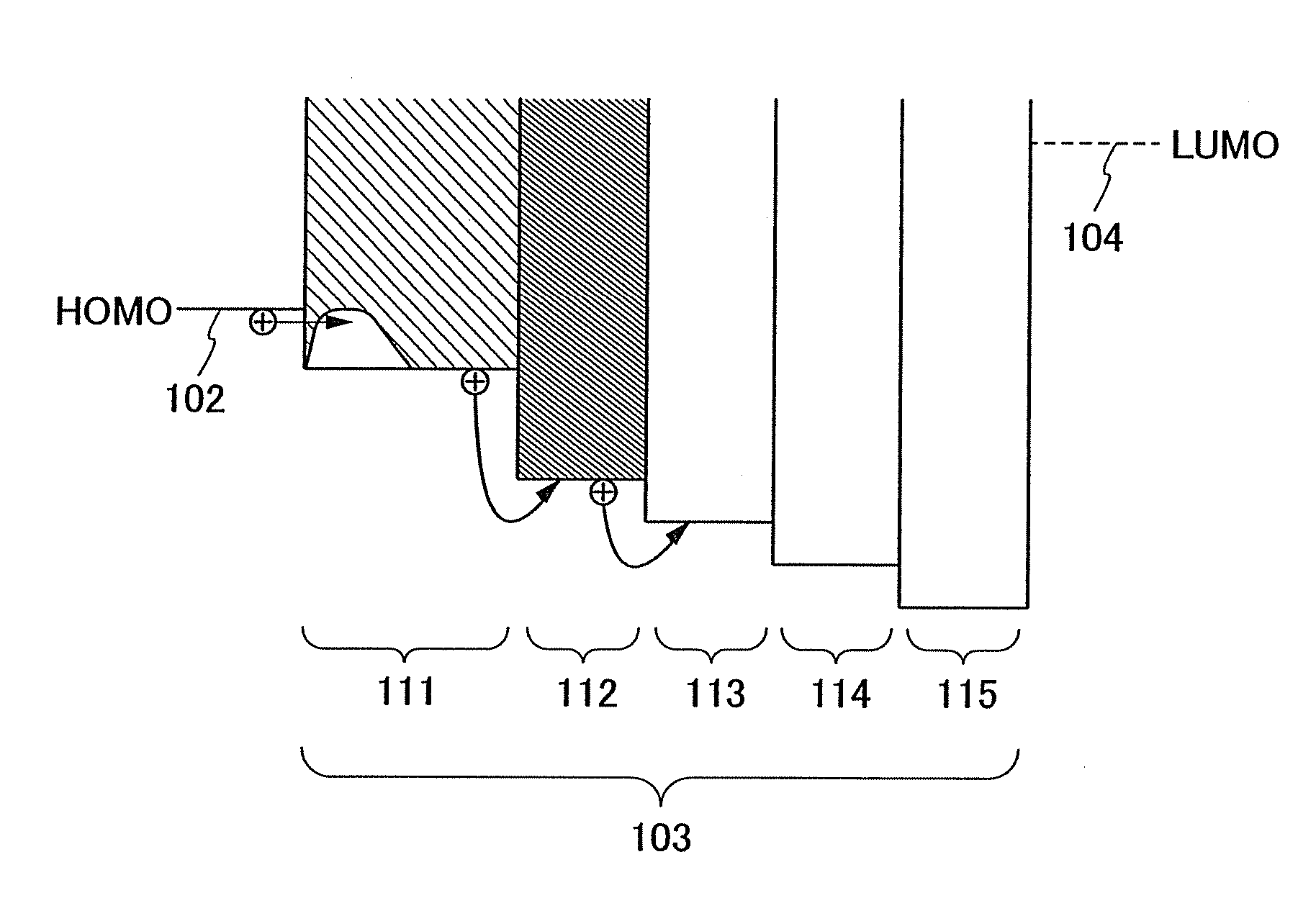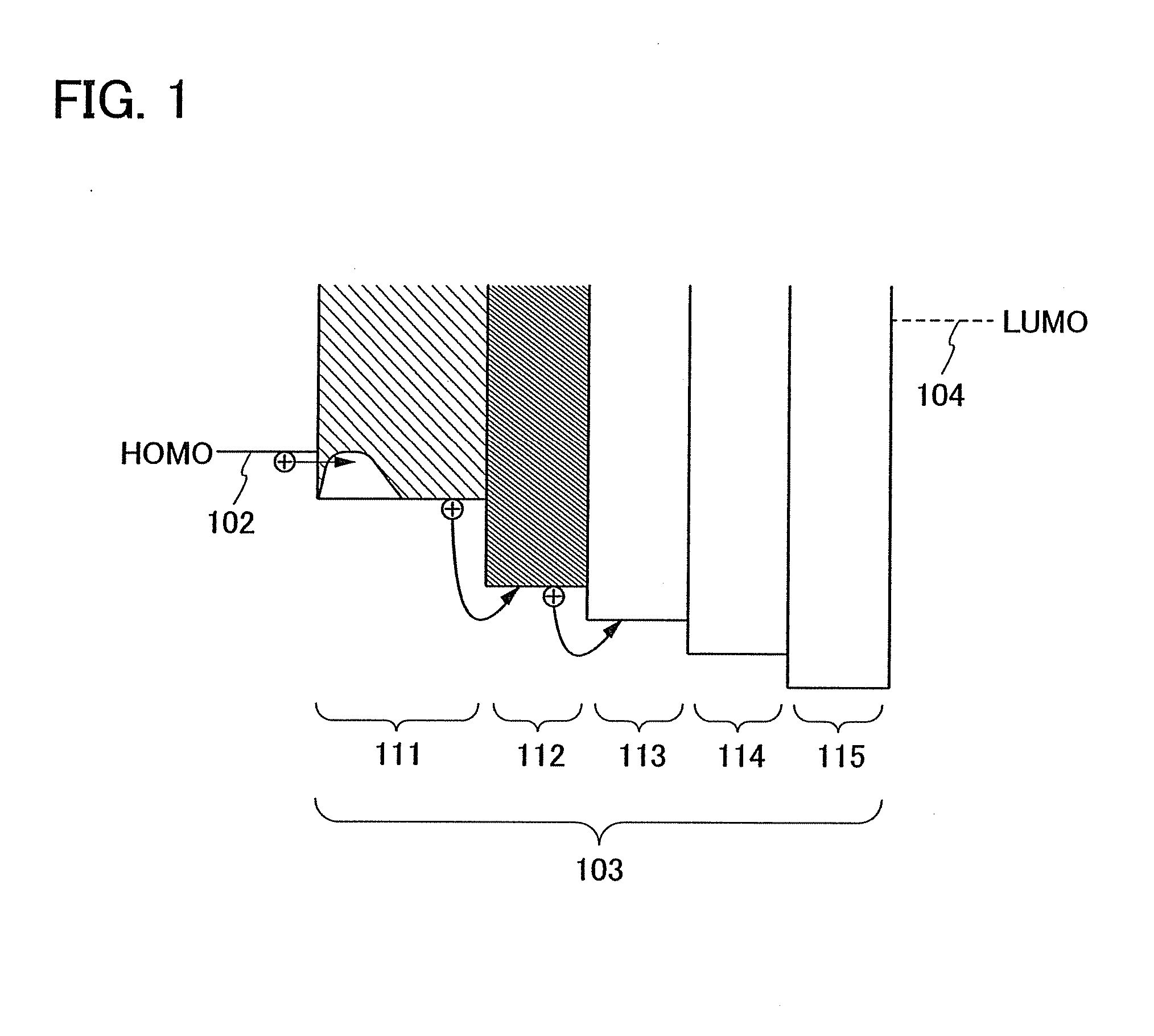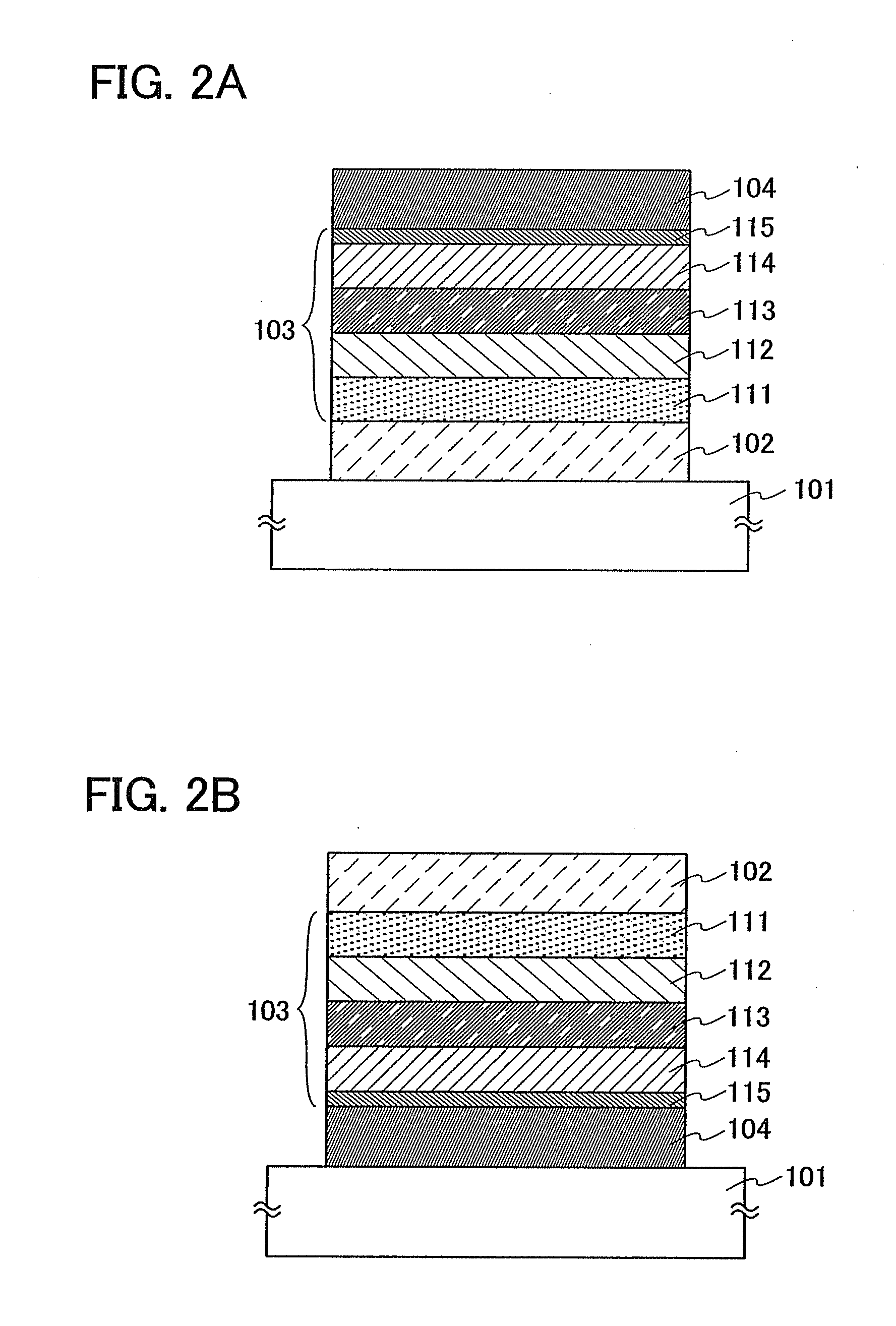Light-Emitting Element, Light-Emitting Device, and Electronic Device
a technology of light-emitting elements and light-emitting devices, which is applied in the direction of organic semiconductor devices, discharge tubes/lamp details, discharge tubes luminescnet screens, etc., can solve the problems of inability to easily achieve, short lifetime of light-emitting elements, and low durability of hole-blocking layers, so as to reduce the amount of injection of holes, increase the luminous efficiency of light-emitting elements, and reduce the effect of injection
- Summary
- Abstract
- Description
- Claims
- Application Information
AI Technical Summary
Benefits of technology
Problems solved by technology
Method used
Image
Examples
embodiment mode 1
[0056]In Embodiment Mode 1, a light-emitting element of the present invention having a structure which is capable of suppressing the injection amount of holes from a first layer (a hole-injecting layer) into a second layer (a hole-transporting layer) of the light-emitting element will be described.
[0057]The light-emitting element in Embodiment Mode 1 includes a first electrode functioning as an anode, a second electrode functioning as a cathode, and an EL layer provided between the first electrode and the second electrode. As for the EL layer, it is acceptable as long as at least a hole-injecting layer, a hole-transporting layer, and a light-emitting layer are sequentially stacked from the first electrode side; the hole-injecting layer is formed of a composite material which makes it easy to inject holes regardless of the work function of the first electrode; and the hole-transporting layer and the hole-injecting layer are provided so that the HOMO level (the absolute value) of the ...
embodiment mode 2
[0113]In Embodiment Mode 2, a light-emitting element of the present invention which has a structure which reduces the electron transport rate in addition to the structure described in Embodiment Mode 1, which controls the injection amount of holes, will be described.
[0114]A light-emitting element in Embodiment Mode 2 includes a first electrode, a second electrode, and an EL layer provided between the first electrode and the second electrode. In the EL layer, at least a hole-injecting layer, a hole-transporting layer, a light-emitting layer, and a carrier-controlling layer are sequentially stacked from the first electrode side; and it is acceptable as long as the hole-injecting layer is formed of a composite material, and the hole-transporting layer and the hole-injecting layer are provided so that the HOMO level (the absolute value) of the hole-transporting layer becomes deeper (higher) than that of the hole-injecting layer. There is no particular limitation on other layers.
[0115]Th...
embodiment mode 3
[0174]In Embodiment Mode 3, a light-emitting element having a plurality of EL layers of the light-emitting elements described in Embodiment Modes 1 and 2 (hereinafter, such a light-emitting element is referred to as a “stacked-type light-emitting element”) will be described with reference to FIG. 8. This light-emitting element is a stacked-type light-emitting element which has a plurality of EL layers (a first EL layer 803 and a second EL layer 804) between a first electrode 801 and a second electrode 802. Note that, although a structure of two EL layers is described in Embodiment Mode 3, a structure of three or more EL layers may be employed.
[0175]In Embodiment Mode 3, the first electrode 801 functions as an anode and the second electrode 802 functions as a cathode. Note that the first electrode 801 and the second electrode 802 can be made to have structures similar to those described in Embodiment Mode 1. Further, for the plurality of EL layers (the first EL layer 803 and the seco...
PUM
 Login to View More
Login to View More Abstract
Description
Claims
Application Information
 Login to View More
Login to View More - R&D
- Intellectual Property
- Life Sciences
- Materials
- Tech Scout
- Unparalleled Data Quality
- Higher Quality Content
- 60% Fewer Hallucinations
Browse by: Latest US Patents, China's latest patents, Technical Efficacy Thesaurus, Application Domain, Technology Topic, Popular Technical Reports.
© 2025 PatSnap. All rights reserved.Legal|Privacy policy|Modern Slavery Act Transparency Statement|Sitemap|About US| Contact US: help@patsnap.com



